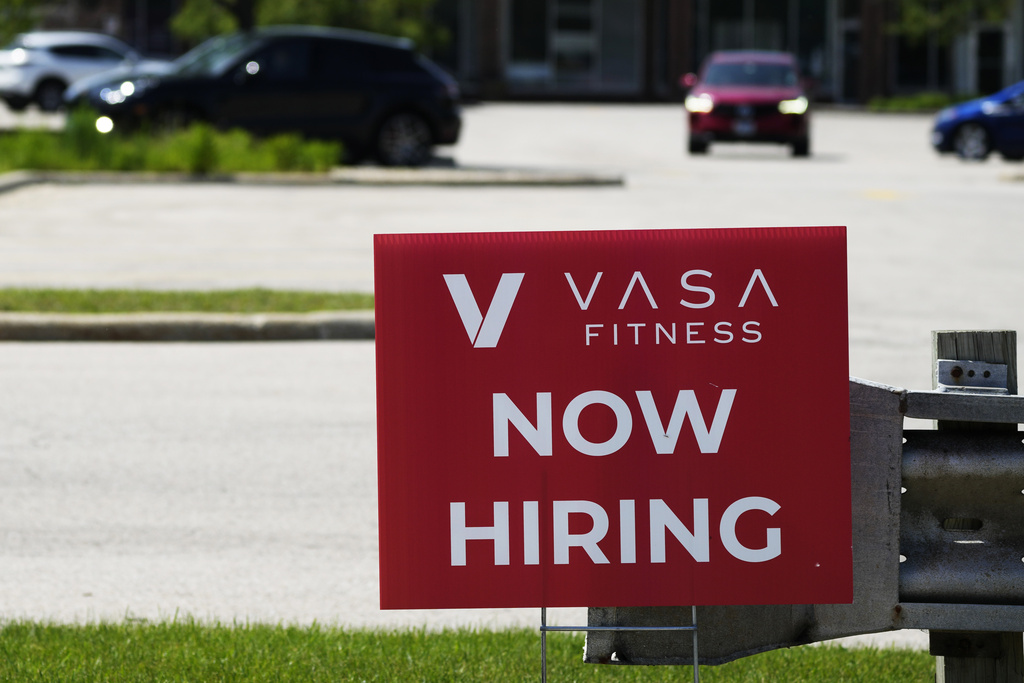U.S. job openings rose slightly to 8.1 million in May despite the impact of higher interest rates intended to cool the labor market.
Vacancies rose from a revised 7.9 million in April, the first reading below 8 million since February 2021, the Labor Department reported Tuesday. April openings were marked down from an originally reported 8.1 million.
Layoffs rose to 1.65 million in May from 1.54 million in April. The number of Americans quitting their jobs — a sign of confidence in their prospects — was basically unchanged.
“The report was another sign that the labor market is holding firm … The expansion looks solid,’’ said Robert Frick, economist at the Navy Federal Credit Union.
The U.S. economy and job market have been remarkably resilient in the face of the Federal Reserve’s campaign to raise interest rates to rein in inflation. The Fed hiked its benchmark rate 11 times in 2022 and 2023, lifting it to a 23-year high.
Defying expectations of a recession, the U.S. economy kept growing and employers kept hiring.
But lately there have been signs the economy is losing some steam. Job openings have come steadily down since peaking at 12.2 million in March 2022. The job market is still strong. There are 1.25 jobs for every unemployed American, but that’s down from a 2-to-1 ratio in January 2023.
Fed policymakers welcome lower job openings — a relatively painless way to cool a hot job market and reduce pressure on companies to raise wages, which can feed inflation.
From January through March this year, the economy grew at an annual pace of just 1.4%, slowest since spring 2022. Consumer spending, which accounts for around 70% of U.S. economic activity, e xpanded just 1.5% after advancing at a pace of more than 3% in each of the last two quarters of 2023.
The Labor Department is expected to report Friday that employers added 190,000 jobs last month, down from 272,000 in May, according to a survey of forecasters by the data firm FactSet. Unemployment is forecast to stay low at 4%.
High interest rates have helped bring inflation down closer to the Fed’s target of 2% a year from a four-decade high 9.1% in June 2022. Progress on containing price increases is expected to allow the central bank to start cutting rates. Wall Street investors are expecting the first rate cut at the Fed’s September meeting.
Speaking at a conference in Portugal Tuesday, Fed Chair Jerome Powell said that progress toward lower inflation appears to have resumed after stalling earlier this year. But he said the Fed needed to see more evidence before it cuts rates.
(AP)












One Response
While interest rates (at least for business loans) may have a major impact on employment, more important is the birth rate, and in particular the birthrates 20-65 years ago, which combined with immigration determines the labor force. At present the baby boomers are quitting their jobs, and there aren’t all that many people to replace them since American sharply cut back on having children, and aren’t especially welcoming to immigrants. To have surplus labor, which is bad for the workers but good for the economy, you need lots of babies and immigrants, which is not something that the Federal Reserve Banks have any influence over.